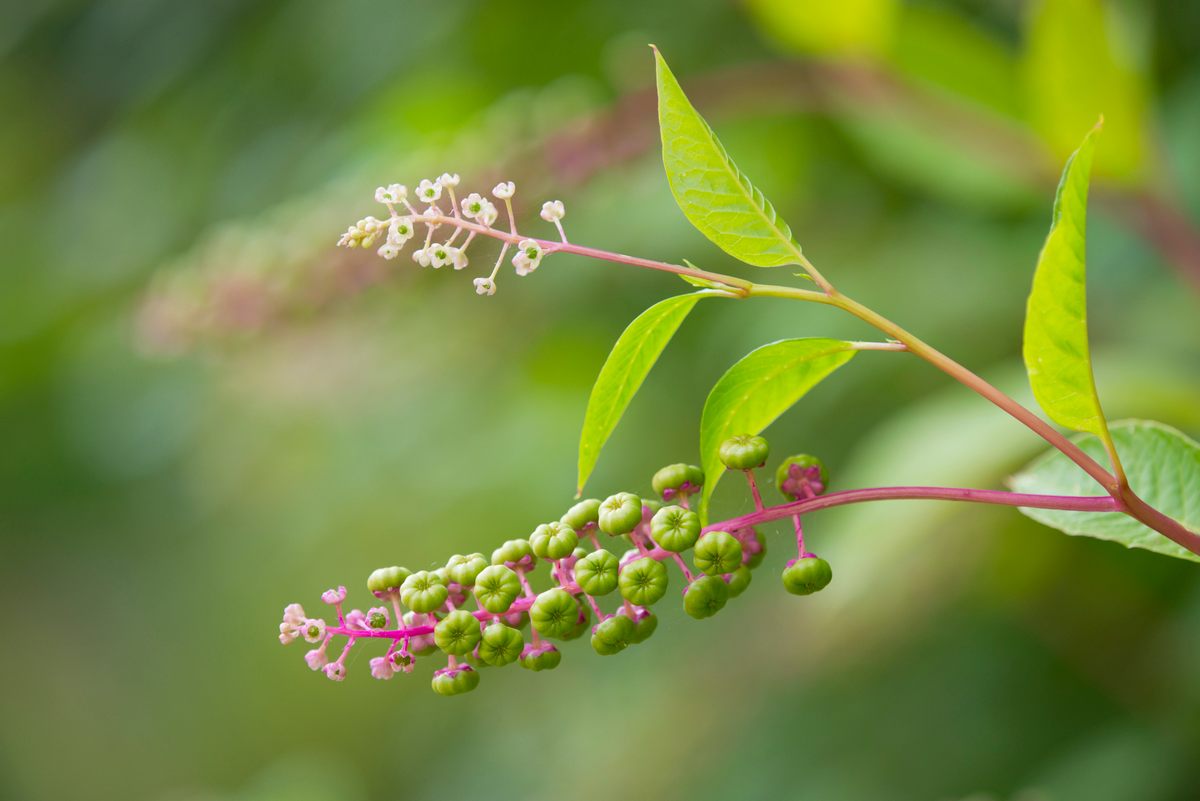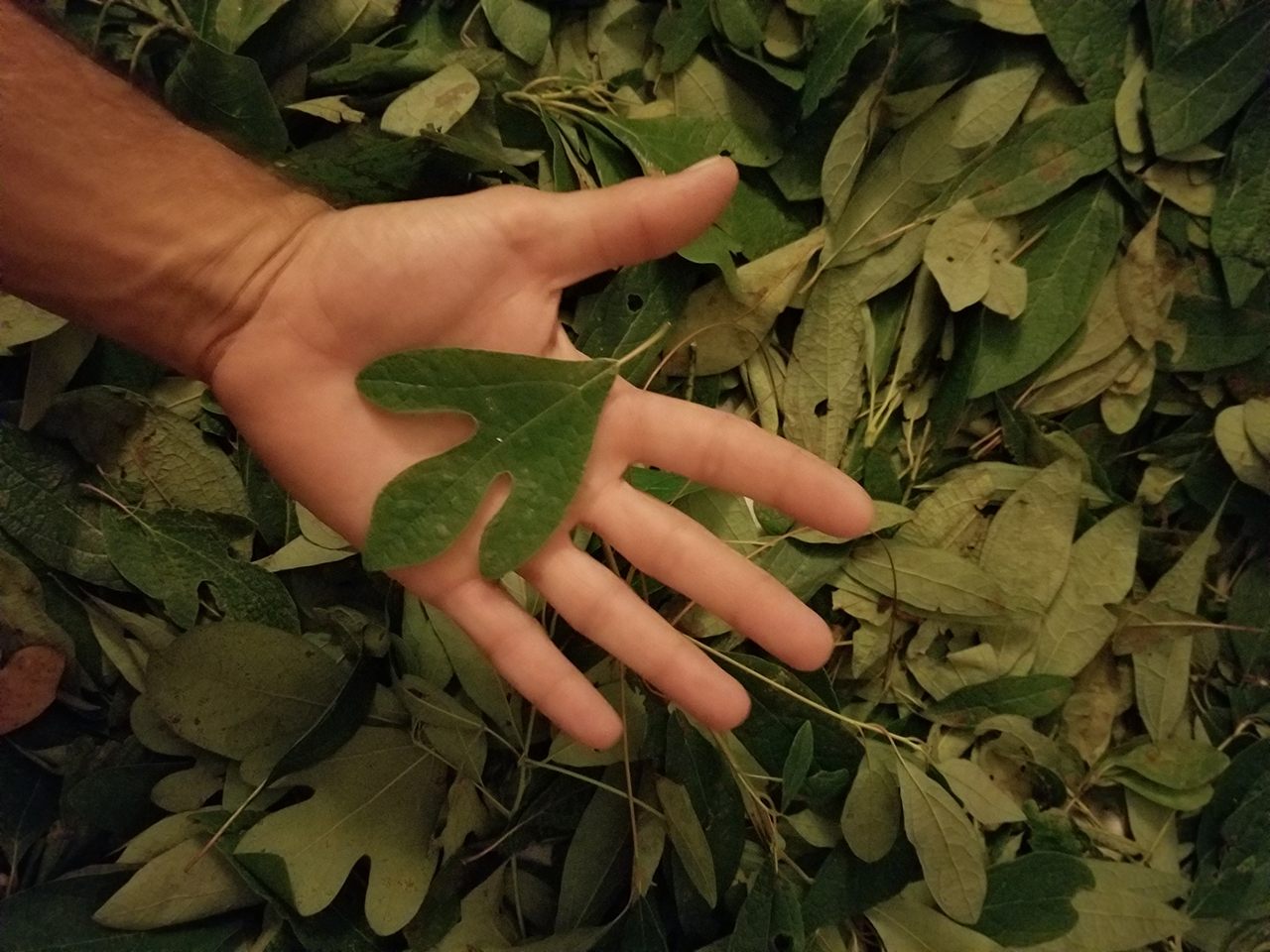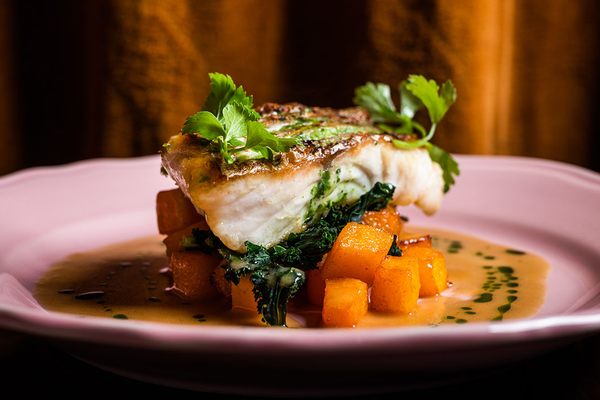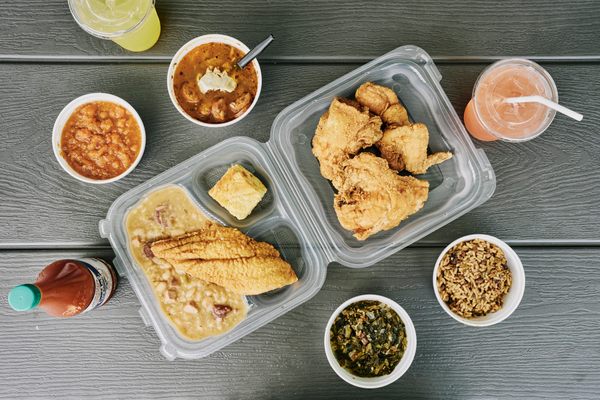The Native-American Origins of Gumbo
While credit for the dish is widely shared, here’s how to choose ingredients that celebrate its Indigenous roots.
The secret to whipping up a gumbo that makes your neighbors jealous is in Kisatchie National Forest. At least, that’s what John Oswald Colson and Dustin Fuqua might tell you. Every summer, Colson and Fuqua make their way through the longleaf pines of Central Louisiana until they find a wispy, unassuming tree with mitten-shaped leaves low enough to pick. This is the sassafras tree, and the highly coveted, gumbo-elevating herb made from its dried and pulverized leaves is called filé.
Colson, who is officially recognized by the state government as a Louisiana Tradition Bearer for his filé-making, harvests the sassafras leaves according to ancestral practices perfected over decades.
“When I first started harvesting the sassafras leaves, my dad would I would come out to Kisatchie by horseback,” Colson said in an interview with 64 Parishes, noting that he was five or seven years old during his first harvest. “I’ve been doing this for about 60 years now.”
Fuqua, his friend and the Chief of Resource Management at Cane River Creole National Park, has been accompanying him on harvest trips and learning the traditional way of processing sassafras for more than 10 years. Although Colson is a Cane River Creole—someone of French or African descent in the Cane River area of Central Louisiana—his methods come from the Choctaw, passed down to him through his parents. From tree to gumbo pot, Colson’s filé is indigenous in origin.
“We try to make sure to give credit where credit is due,” says Fuqua. “It’s a shared tradition now, but we learned it from the Native Americans.”

Indigenous people don’t often receive that level of credit, though, in the complicated origin story of gumbo. For years, historians and cookbook authors promoted a story that gumbo started simmering on stovetops after an incident known as the Frying Pan Revolt or Petticoat Insurrection. The legend goes that in 1722 a group of French housewives, fed up with the colony’s bland or unfamiliar ingredients, banged on pots and pans outside the house of Louisiana’s governor, Jean-Baptiste Le Moyne de Bienville. Bienville foisted the women onto his housekeeper, who taught them what she had learned from Choctaw people about cooking with local ingredients. The women then took their newfound appreciation for shrimp, crawfish, and filé, and incorporated it into the okra-based stews they’d already learned from enslaved people of West African descent, whose word for okra, ki ngombo, is likely the source of gumbo’s name.
It’s the kind of story that is a New Orleans tour guide’s bread and butter, but without any official documentation from that time period, the Frying Pan Revolt is exactly that: a story. It’s a Eurocentric one to boot, implying that the French were the masterminds who combined Choctaw and West African techniques with French ones to create not only gumbo, but Creole cuisine at large. This line of thinking was echoed in cookbook introductions and dominated Louisiana’s culinary narrative for centuries, until food historians began reexamining the evidence and found, more than likely, it was the enslaved people of West African descent, not the French, who were the driving cultural force behind the evolution of gumbo and Creole cuisine.
Native American influence on gumbo remains mostly a footnote, though a peek inside the pot reveals key elements that made their way in thanks to their knowledge and domestication. So if you’re up for a culinary journey, grab a pot, turn on the stove, and make a gumbo with these indigenous ingredients.

The Thickener
There are three main ways to thicken gumbo: with filé, okra, or a roux, which is a paste made from fat and flour. For a gumbo with an earthy depth and a hint of spice, reach for the filé, but wait until the end before adding it. Cooking filé for too long gives the broth a stringy consistency.
Filé is best when sourced from a traditional maker like Colson. Homemade filé is bright green, pungent, and so fine that it stains your fingertips, while store bought filé has the color, consistency, and arguably the flavor of sawdust, likely because big brands aren’t as diligent about removing the stems before pounding the leaves.
In the past, finding fresh, homemade filé would’ve been a matter of keeping your eyes peeled and ears open in communities around Acadiana or the Natchitoches area in late summer. “Traditional makers would sell the product in repurposed beer bottles and other glass containers,” says Fuqua. “It was typically a word-of-mouth advertisement, a sign on the roadside, a handwritten flyer somewhere around a church, or on a community-store bulletin board.”
Before the pandemic, you could’ve found Colson’s highly coveted filé for sale at the Natchitoches-NSU Folklife Festival every July. These days, your best bet is to look for advertisements on social media, such as Facebook Marketplace in a central or southeastern Louisiana community, and have a traditional maker ship the seasoning directly to you.
You could try to make filé the Choctaw-informed way, but strap in for a labor-intensive process. As devout Catholics, Cane River Creoles such as Colson traditionally harvested sassafras around August 15th—the Feast of the Assumption—but the choice of that date is rooted in ecological knowledge imparted by the Choctaw. (Many filé makers now harvest earlier in the summer, likely due to climate change.) Colson and Fuqua pick leaves by hand, leaving the tree and the branches intact. Taking too many leaves or cutting the branch, as some people do, can kill the tree. Such insensitive harvesting practices have already made it difficult to find sassafras around Cane River.
Once picked, Colson spreads the leaves across the floor of his home, then turns them over a few times for two to three weeks or until the leaves dry out. The final step is to destem the dried leaves and grind them into a powder using a pile and pilon, a traditional mortar and pestle used by Native American groups from across the Southeast. While Colson uses a pile and pilon, filé makers in the United Houma Nation advise that a Ninja blender creates the same quality product.
To outsiders, this sort of attention to historical detail might seem obsessive, but for Colson, Fuqua, and filé-lovers throughout Louisiana, there’s simply no alternative. Not only does it make a superior filé, but it’s also an issue of honor and respect, both for the tradition’s originators and the land.
“That’s how we commemorate the Native Americans,” says Fuqua, “by continuing to use that specific practice and to be as minimally invasive as possible.”

The Vegetables
Many Native American homecooks use vegetables that were popularized by chefs of African or European descent, such as onion, celery, and bell pepper. But if you want your gumbo to reflect what cooks whipped up prior to contact with colonizers, then add a handful of wild greens to the simmering broth.
“When it was just the natural resources, that must have been some stewy dish,” says Fuqua. “There’s a lot of vegetable matter. Whatever gumbo derived from, in the pre-contact period it was more like gumbo z’herbes.”
Gumbo z’herbes, also known as “green gumbo,” was made famous by Leah Chase, the chef and civil-rights activist behind the iconic Dooky Chase Restaurant in New Orleans. Her recipe features nine different types of greens, including mustard greens, collard greens, and turnip greens.
Rhonda Gauthier, a member of the Choctaw-Apache Tribe of Ebarb and an authority on Native American foodways in Northwest Louisiana, has been making “green gumbo” with her family since before she even knew what green gumbo was.
“I worked a long time around the Creole people,” says Gauthier, a clerk at Northwestern State University’s Creole Heritage Center. “The Creole women would talk about making green gumbo. I didn’t know what they were talking about.”
One day she asked her friend how she made the dish, only to realize that her family had been making a similar stew for years using greens from their garden.
While mustard greens, collard greens, cabbage, and other leafy vegetables are today’s go-to gumbo additions for chefs of all heritages, Native Americans in Louisiana’s pre-contact period harvested and ate pokeweed (Phytolacca americana), a wild green that’s ready to eat in spring. Also known as poke salad, poor Louisianans continued to harvest and eat pokeweed out of economic necessity well into the 1900s. Its popularity lives on in the state thanks to the Blanchard Poke Salad Festival, Tony Joe White’s 1969 hit “Polk Salad Annie,” and good old fashioned culinary nostalgia.
The inclusion of pokeweed into gumbo is an unusual choice, but it’s not unheard of. While you won’t find the leafy green in grocery stores, it grows wild across North America. To add some to your gumbo, take a walk along fences or pastures and keep an eye out for a plant with oval-shaped leaves, red stems, and a towering height. Consult a guide such as iNaturalist before harvesting, and be sure to pick the leaves in spring when they’re tender and least toxic. In its raw form, pokeweed is toxic, so boil the leaves three times—tossing out the water after each boil—before adding them to the gumbo pot. But since the berries are poisonous and the health risks are real, it’s a good idea to be cautious and seek out someone with experience when you make your first pokeweed-filled gumbo.
The Protein
The final gumbo component is the choice of protein. Some people swear by chicken and sausage, while others claim that gumbo fortified with shrimp or crawfish is the only way to go. If you toss a few pounds of shellfish into your cooking pot, you’ll find yourself in the company of both contemporary and pre-contact Native Americans, who were enjoying Louisiana’s aquatic bounty before Europeans and Africans arrived, then imparted their knowledge of the crustaceans to the colonizers.
The United Houma Nation, a state-recognized tribe along Louisiana’s southeastern coast of 17,000 members, has been harvesting shrimp since the Houma people first moved to the region in the 1800s. Many members still work in the shrimping industry, though cheap imports, the Deepwater Horizon oil spill, and lack of federal recognition have all made it difficult for them to thrive.
Janie Luster, a cultural preservationist and member of the United Houma Nation, has perfected her tribe’s traditional filé gumbo recipe after many years of cooking demonstrations at festivals and in the New Orleans French Quarter. The recipe calls for shrimp as the protein, naturally.
“We don’t make a roux, which is the unique thing,” says Luster, referencing the flour and fat gumbo base popularized by Cajuns. “We start it off by browning the onions. The thickening agent is the sassafras, or the filé.”
She notes that the smell of the onions browning would attract tourists from across the Quarter and that even the biggest gumbo critics couldn’t resist the traditional Houma dish.

Houma Indian Filé Gumbo Recipe
Courtesy of Janie Luster
3 lbs shrimp
2 Tbsp filé
1 large onion, diced
3 cloves of garlic
½ cup diced celery
½ cup diced bell peppers
¼ cup parsley
Creole seasoning to taste
2 Tbsp vegetable oil
3 qts water
In a large pot, warm the vegetable oil on medium-high heat. Add the onions and sauté them until they’re lightly browned. Add the garlic and sauté until fragrant. Gradually mix in the shrimp, cooking until they’re pink. Stir in the celery and bell peppers, then cook for 3 to 5 minutes. Add the water, bring to a boil, then reduce heat and simmer for 20 minutes, stirring occasionally. Add Creole seasoning and parsley, then turn off the heat. Add the filé and stir. Put the pot lid on and let it sit for a few minutes. Serve over rice. Sprinkle more filé on top as desired.
Gastro Obscura covers the world’s most wondrous food and drink.
Sign up for our regular newsletter.





































Follow us on Twitter to get the latest on the world's hidden wonders.
Like us on Facebook to get the latest on the world's hidden wonders.
Follow us on Twitter Like us on Facebook